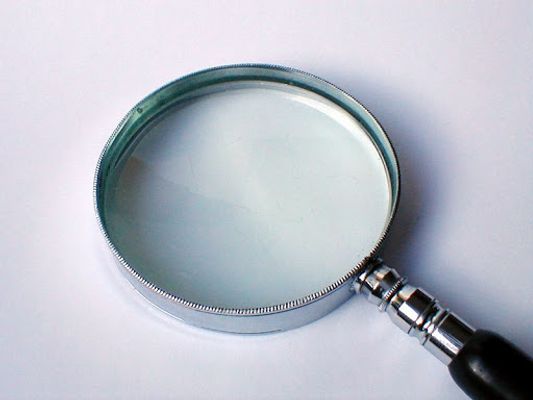7.5.1
Detection in Atonement
Robbie and Cecilia as Detectives in Atonement
Robbie and Cecilia as Detectives in Atonement
Atonement does not have an obvious detective figure. The police inspectors who arrive at the Tallis household are there for only two chapters. The focus of the novel then swiftly turns to the British army’s retreat to Dunkirk.


Robbie's theory about Briony
Robbie's theory about Briony
- We do see characters briefly play detective. Robbie theorises about Briony’s false accusation against him and traces the cause back to an incident eight years’ previous in which Briony deliberately falls into a pool and forces Robbie to jump in and save her from drowning.
- Briony then tells Robbie that she loves him, something Robbie puts down to a “schoolgirlish passion” which Briony must have “hidden” and “nurtured” (p233) for three years which in turn led to her feeling “betrayed” by Robbie “favouring her sister” (p233).


Cecilia's role as detective
Cecilia's role as detective
- Cecilia also plays the role of detective, convinced that it had been Danny Hardman who had sexually assaulted Lola.
Briony and the Reader as Detectives in Atonement
Briony and the Reader as Detectives in Atonement
The closest to a detective figure in the novel is Briony. It is she who begins to piece together a story when she observes Robbie and Cecilia by the fountain in Chapter 3.


Briony introduces criminality
Briony introduces criminality
- Briony introduces a criminal element to explain what she has witnessed (“What strange power did he have over her? Blackmail? Threats?” p38).
- Robbie’s obscene note to Cecilia is, for Briony, further evidence of Robbie’s criminality (“With the letter, something elemental, brutal, perhaps even criminal had been introduced…” p113) and, when she comes upon him and Cecilia making love in the library, she interprets this as a sexual assault by a “maniac”.


Briony's misinterpretations
Briony's misinterpretations
- But due to McEwan’s use of different perspectives in the novel, with events focalised through different characters at different points throughout Part One, readers can see that Briony’s assumption of Robbie’s criminality is based on a series of tragic misinterpretations.
- We witness each of these events being focalised through the perspective of either Cecilia (Chapter 2) or Robbie (Chapters 8 and 11) and so are well aware that Briony’s perspective is flawed.


Briony stopping the confession
Briony stopping the confession
- Just as Lola is on the point of making some form of “confession” (p166), Briony shuts her down and imposes upon Lola her own version of events: “It was Robbie, wasn’t it?”


The reader as detective
The reader as detective
- This, in turn, places the reader in the role of detective.
- McEwan positions us to discount Briony’s interpretation of events and invites us to come to our own understanding of what has happened by the island temple.
- McEwan (or Briony?) has left us with a number of clues, particularly concerning Paul Marshall’s sexual interest in young girls, although, as is traditional with crime texts, the revelation of the identity of the criminal does not arrive until near the end.
1Introduction to Atonement
1.1Introduction & Background to Atonement
1.2Focus of Your Exam: Crime Texts
2Chapter Summaries & Analysis: Part One
2.6Chapter 6
2.10Chapter 10
2.11Chapter 11
2.12Chapter 12
2.13Chapter 13
2.14Chapter 14
3Chapter Summaries & Analysis: Part Two
3.1Pages 191-201: To the Farmhouse
3.2Pages 202-213: The Night in the Barn
3.3Pages 214-226: The Attack
3.4Pages 226-234: Robbie's Reflections
3.5Pages 234-246: To the Bridge over the Canal
3.6Pages 246-254: Arrival at Dunkirk
3.7Pages 254-265: To the Cellar
4Chapter Summaries & Analysis: Part Three
4.1Pages 269-277: London, 1940
4.2Pages 277-286: Briony as Writer
4.3Pages 287-315: Victims of War
4.4Pages 315-327: Lola & Paul Marshall’s Wedding
4.5Pages 328-349: The Visit
5Chapter Summaries & Analysis: Part Four
5.1Epilogue: London, 1999 - Pages 353-371
6Key Character Profiles
6.1Briony Tallis
6.2Robbie Turner
6.3Cecilia Tallis
6.5Paul Marshall
6.6Emily Tallis
7Key Themes
7.1Introduction to Crime Texts
7.2Crimes in Atonement
7.3Criminals in Atonement
7.4Victims in Atonement
7.5Detection in Atonement
7.6Settings in Atonement
7.7Guilt & Punishment in Atonement
8Writing Techniques
9Context
9.1Historical Context
9.2Social Context
9.3Literary Context
10Critical Debates
10.1Marxist Literary Criticism
Jump to other topics
1Introduction to Atonement
1.1Introduction & Background to Atonement
1.2Focus of Your Exam: Crime Texts
2Chapter Summaries & Analysis: Part One
2.6Chapter 6
2.10Chapter 10
2.11Chapter 11
2.12Chapter 12
2.13Chapter 13
2.14Chapter 14
3Chapter Summaries & Analysis: Part Two
3.1Pages 191-201: To the Farmhouse
3.2Pages 202-213: The Night in the Barn
3.3Pages 214-226: The Attack
3.4Pages 226-234: Robbie's Reflections
3.5Pages 234-246: To the Bridge over the Canal
3.6Pages 246-254: Arrival at Dunkirk
3.7Pages 254-265: To the Cellar
4Chapter Summaries & Analysis: Part Three
4.1Pages 269-277: London, 1940
4.2Pages 277-286: Briony as Writer
4.3Pages 287-315: Victims of War
4.4Pages 315-327: Lola & Paul Marshall’s Wedding
4.5Pages 328-349: The Visit
5Chapter Summaries & Analysis: Part Four
5.1Epilogue: London, 1999 - Pages 353-371
6Key Character Profiles
6.1Briony Tallis
6.2Robbie Turner
6.3Cecilia Tallis
6.5Paul Marshall
6.6Emily Tallis
7Key Themes
7.1Introduction to Crime Texts
7.2Crimes in Atonement
7.3Criminals in Atonement
7.4Victims in Atonement
7.5Detection in Atonement
7.6Settings in Atonement
7.7Guilt & Punishment in Atonement
8Writing Techniques
9Context
9.1Historical Context
9.2Social Context
9.3Literary Context
10Critical Debates
10.1Marxist Literary Criticism
Unlock your full potential with Seneca Premium
Unlimited access to 10,000+ open-ended exam questions
Mini-mock exams based on your study history
Unlock 800+ premium courses & e-books